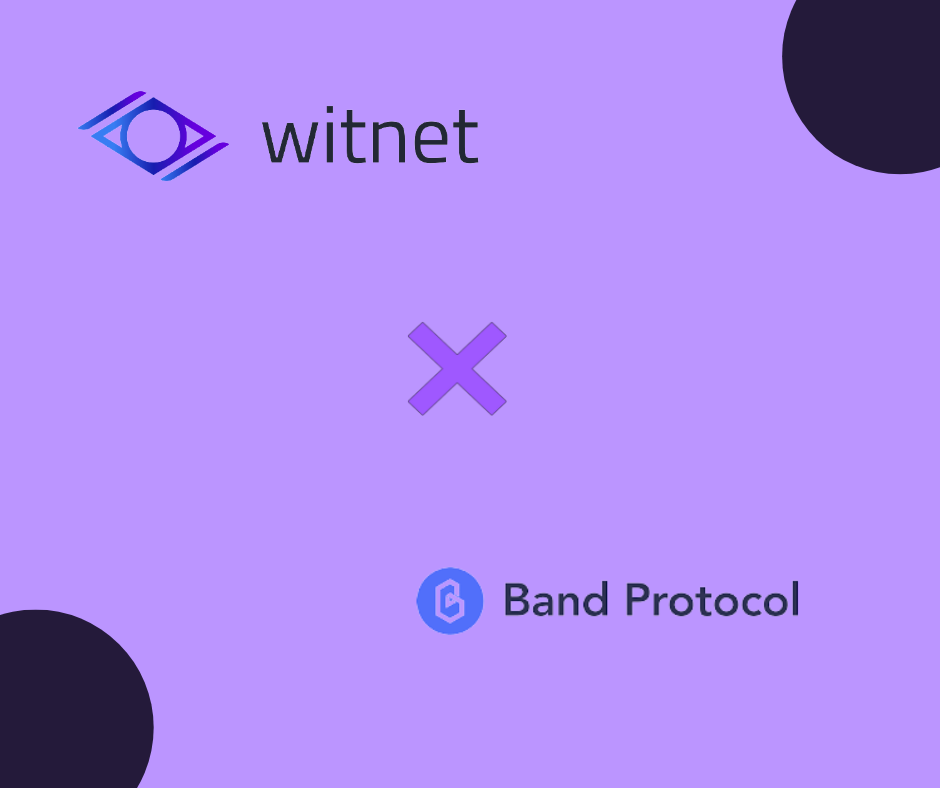Key Unique Features Between Witnet Blockchain and Band Protocol
This article will spell out Key Unique Features Between Witnet Blockchain and Band Protocol

Band Protocol allows data from the real world to interact with blockchains in order to allow developers access to various datasets, including but not limited to price feeds, wallet metrics, or even weather, random numbers, and sporting event results.
Band Protocol was initially developed on the Ethereum network as an ERC-20 project but migrated to the Cosmos network in June 2020 (including a shift in development to the Cosmos SDK)
BAND acts as the native token of the Band Protocol and is used as collateral to verify and fulfil data requests, as well as a medium of exchange on BandChain as payment for private or exclusive datasets.
It is designed to be more efficient than other oracle networks and to work better with more blockchain and smart contract networks. This means that accurate and trustworthy data can be sent across chains more quickly.
Witnet is the first Layer 1 Blockchain Oracle Custom built with Rust from the ground up. Witnet was designed to be blockchain-agnostic, meaning it can be integrated with various blockchain platforms, providing flexibility to developers. Witnet was built with one sole purpose, which was data requests. Witnet is capable of querying any form of data, ranging from price feeds, wallet metrics, or even weather, random numbers, and sporting event results. Due to the fact that Witnet was carefully crafted for Oracles and Oracle solutions only, it was very easy to build upside for developers. Things like being able to pay for data feeds in your native coin, querying anything, and not being tied to the fate of the chain Witnet is deployed on.
Witnet is currently transitioning to being the first Layer 1 proof-of-stake blockchain.
You can read in this article about the road map and how things are being rolled out.
https://medium.com/witnet/witnet-2-0-roadmap-b1ca2ce69c0f
Just as Band WIT acts as the native of the Witnet Blockchain, it is used to incentivize node validators (“witnesses”) through a reward system when resolving data requests and mining blocks; they are used as payment systems for data requests; they act as a form of collateral, ensuring node operators are not subject to bribery in high-value data requests.
Witnet emphasises on complete decentralisation in its oracle network. Its architecture is aimed at distributing control and decision-making power among multiple participants, reducing the potential for manipulation or collusion. The Band Protocol also aimed for decentralisation, but the degree of decentralisation may have varied between the two systems.
While Witnet is a plug-and-play, agnostically designed blockchain oracle that is designed to be deployed on any blockchain, Band is solely focused on the Cosmos Ecosystem and the Ethereum and other EVM-compatible blockchains.
Network participants who own BAND tokens carry out the consensus-based data verification process in Band Protocol. They have node providers that fall into two categories: validators and delegators. This two-node structure is common among Cosmos-based delegated proof-of-stake (DPoS) blockchains. Validators propose new blocks and participate in Band Protocol’s DPoS consensus protocol by voting on the authenticity of data. BandChain validators function the same way as validators on other blockchains built using the Cosmos SDK.
Witnet currently uses a probabilistic BFT-alike consensus algorithm; it doesn’t require proof of work. Anyone can run a node in Witnet and start validating and fulfilling data requests. This independent nodes on the Witnet network pick up data requests and attempt to fulfill them. These nodes are responsible for retrieving data from external sources, validating it, and reaching a consensus on the accuracy of the data.
But the big picture is witnet is transitioning to being the first Layer 1 proof-of-stake blockchain.
Witnet currently has a huge number of validators that will also be transitioned upon migration to POS. With Witnet Proof of Stake, there will be a measure that is a function of stake amount times stake age. This will be called power. Stake amount refers to the total amount that a node has staked, and stake age is the length of time it has gone without performing a function.
Also Power in the Witnet network is essentially always being reset because stake age refreshes after an action has been performed (data requests, block proposing). This means that there is a strong balance of power at play, and manipulation is hard. Additionally with the Power mechanism, all nodes have a strong chance to perform functions and it is not a “rich get richer” scenario.










